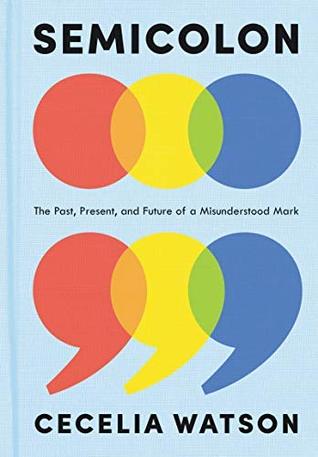More on this book
Community
Kindle Notes & Highlights
Read between
June 29 - June 30, 2020
Kurt Vonnegut was unequivocal in his last book, advising writers, “Do not use semicolons. They are transvestite hermaphrodites representing absolutely nothing. All they do is show you’ve been to college.”
Prior to the 1800s, the majority of grammarians and scholars advocated personal taste and judgment as a guide to punctuating, or “pointing,” a text. The Scottish Enlightenment philosopher George Campbell, writing the same year the Declaration of Independence was signed, argued that “language is purely a species of fashion. . . . It is not the business of grammar, as some critics seem preposterously to imagine, to give law to the fashions which regulate our speech.”
The semicolon is a place where our anxieties and our aspirations about language, class, and education are concentrated, so that in this small mark big ideas are distilled down to a few winking drops of ink.
There was no time when everyone spoke flawless English and people punctuated “properly.” It’s important to come to grips with this historical fact, because it influences how we act in the present: after we nail down some basic punctuation history here through the story of the semicolon, I’ll show that hanging on to the old story about grammar—the mythical story—limits our relationship with language. It keeps us from seeing, describing, and creating beauty in language that rules can’t comprehend.
By the end of this book, I hope to persuade you that reconsidering grammar rules will do exactly that, by refocusing us on the deepest, most primary value and purpose of language: true communication and openness to others.
The semicolon was born in Venice in 1494. It was meant to signify a pause of a length somewhere between that of the comma and that of the colon, and this heritage was reflected in its form, which combines half of each of those marks.
The comma thus was a pause shorter than the semicolon, and the semicolon was a pause shorter than the colon.
The moral of Merra’s story is that no matter how precise you are with your punctuation, and no matter how carefully constructed the legal rules for punctuation use and interpretation might be, there will almost always be a way to cast doubt on the origins of a punctuation mark, or on its original intended meaning, or on its most valid construction given its context.
Twain noted that his punctuation was “none of [the proofreader’s] business,” and reminded his publishers that he “knows more about punctuation in two minutes than any damned bastard of a proof-reader can learn in two centuries.”
Twain was aggressive in his criticisms of his proofreaders because he was tuned in to the value of good punctuation.* By “good,” I don’t mean what rule books mean by “good punctuation.” I mean punctuation that is effective, punctuation that is actively making a text better, punctuation that is fit to the tone and style of the text and its purpose.
Rebecca Solnit, too, deploys semicolons that speed things up rather than slowing them down.
Moby-Dick, on the other hand, was about double the length at around 210,000 words, but had 4000 semicolons. That’s one for every 52 words.
The semicolon, Robinson contends, is frequently “used to gloss over an imprecise thought.” Semicolons, he goes on, “place two clauses in some kind of relation to one another but relieve the writer of saying exactly what that relation is.”*
But the dash nowadays is the Punctuation Mark of First Resort, able to take the place of commas, colons, semicolons, and periods. We now live in the Era of the Dash. Dashes are dashed off right and left by millions of thumbs sweeping fleetly across millions of mobile phones.
People also think semicolons are for highfalutin snobs. Paul Robinson calls them “pretentious.” June Casagrande, who writes on language for the Los Angeles Times, declares that semicolons are “favored by writers who are so proud they know how to use semicolons that they’ll happily shortchange readers to show off their knowledge.”
Rules, considered as frameworks within which to work rather than as boundaries marking the outer limits of rhetorical possibility, might spur creativity, just as a poet might find it productive to work within the strictures of the sonnet form.


